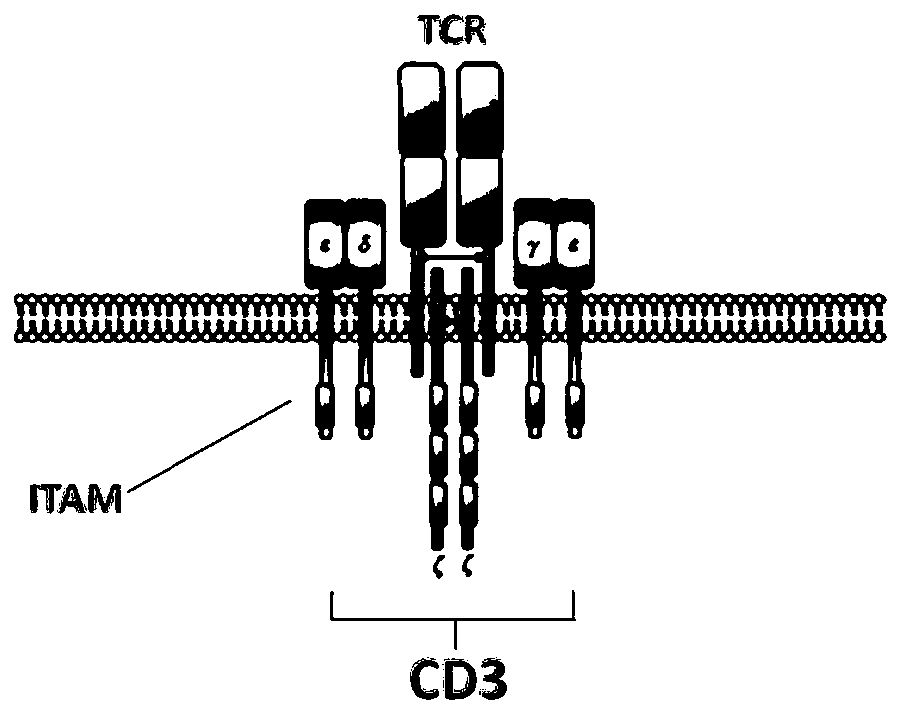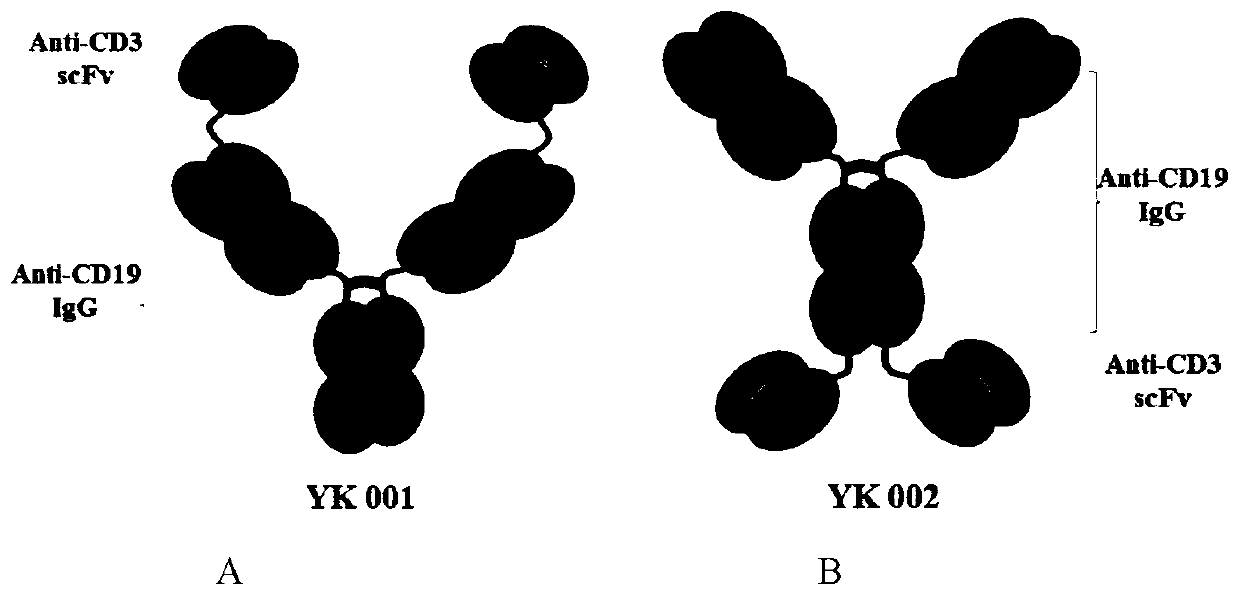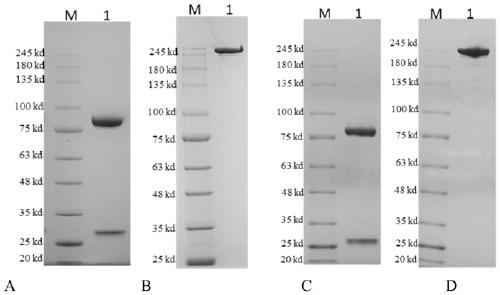Bispecific antibody and preparation method and application thereof
A bispecific antibody and specific technology, applied in the fields of biotechnology and immunology, can solve the problems of limited curative effect of solid tumors
- Summary
- Abstract
- Description
- Claims
- Application Information
AI Technical Summary
Problems solved by technology
Method used
Image
Examples
Embodiment 1
[0076] Example 1 Structure and sequence design of CD19×CD3 bispecific antibody
[0077] In this example, a bispecific antibody was designed using the tumor cell surface antigen CD19 and the immune cell surface antigen CD3 as targets.
[0078] Combining protein structure design software and a large number of manual experimental screening, the present invention screened and determined bispecific antibodies with symmetrical structures including single-chain antibody units and monoclonal antibody units in a variety of bispecific antibody structures that bind to CD19 and CD3 structure. Among them, the anti-CD19 monoclonal antibody unit is an IgG antibody, including two complete light chain-heavy chain pairs (that is, containing complete Fab and Fc domains, and the heavy chain and light chain are connected by disulfide bonds). - The CD3 single-chain antibody unit includes two single-chain antibodies (ScFv), each of which includes a heavy chain variable region and a light chain vari...
Embodiment 2CD19
[0087] Example 2 Preparation of CD19×CD3 bispecific antibody
[0088] 1. Design and synthesis of bispecific antibody coding genes
[0089] According to the amino acid sequences of the two bispecific antibodies YK001 and YK002 obtained in Example 1 and the codon preference of the host cell, the coding genes of the bispecific antibodies were designed. The specific sequences are as follows:
[0090] The heavy chain coding nucleotide sequence of the anti-CD19 monoclonal antibody of YK001 is shown in SEQ ID NO.2;
[0091] The heavy chain coding nucleotide sequence of the anti-CD19 monoclonal antibody of YK002 is shown in SEQ ID NO.21;
[0092] The light chain coding nucleotide sequence of the anti-CD19 monoclonal antibody is shown in SEQ ID NO.4 (YK001 and YK002 are the same);
[0093] The coding nucleotide sequence of the anti-CD3 single chain antibody in YK001 is shown in SEQ ID NO.14;
[0094] The coding nucleotide sequence of the anti-CD3 single chain antibody in YK002 is sh...
Embodiment 3
[0122] Example 3 Determination of Binding Activity of Bispecific Antibodies to Tumor Cells and Immune Cells
[0123] Using Raji (purchased from ATCC, CCL-86) as CD19-positive cells, and T cells as CD3-positive cells, the bispecific antibody of the present invention and the tumor cells expressing CD19 and the immune cells expressing CD3 were detected by flow cytometry. The binding activity of the cell to the target antigen.
[0124] 1. Detection of binding activity of bispecific antibody to Raji cells by flow cytometry
[0125] (1) Collect Raji cells: collect 1×10 6 cells / tubes.
[0126] (2) Rinse the cells: Rinse the cells once with 1ml staining buffer (PBS containing 0.5% w / v BSA+2mM EDTA), centrifuge at 350×g, 4°C for 5min, and resuspend the cells with 200μl staining buffer after centrifugation.
[0127] (3) Bs-antibody binding: add bispecific antibodies YK001 and YK002 to 5 μg / ml respectively, and incubate on ice for 45 minutes.
[0128] (4) Rinse the cells: add 1ml sta...
PUM
 Login to View More
Login to View More Abstract
Description
Claims
Application Information
 Login to View More
Login to View More - R&D
- Intellectual Property
- Life Sciences
- Materials
- Tech Scout
- Unparalleled Data Quality
- Higher Quality Content
- 60% Fewer Hallucinations
Browse by: Latest US Patents, China's latest patents, Technical Efficacy Thesaurus, Application Domain, Technology Topic, Popular Technical Reports.
© 2025 PatSnap. All rights reserved.Legal|Privacy policy|Modern Slavery Act Transparency Statement|Sitemap|About US| Contact US: help@patsnap.com



